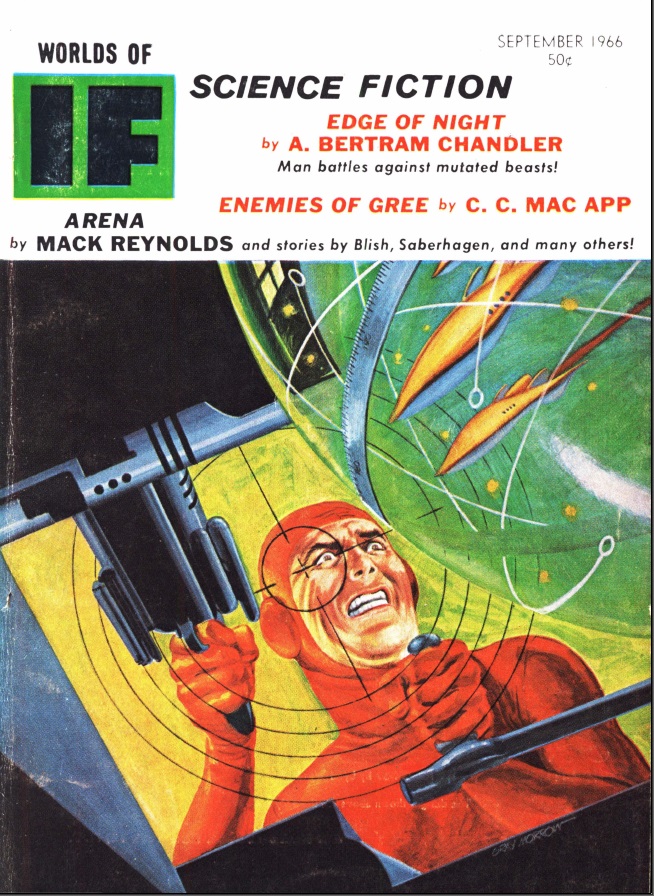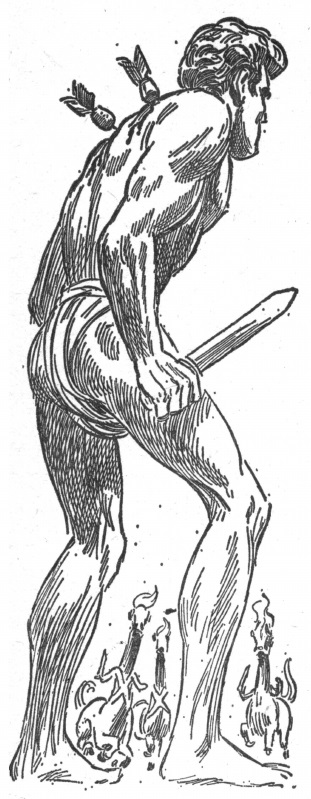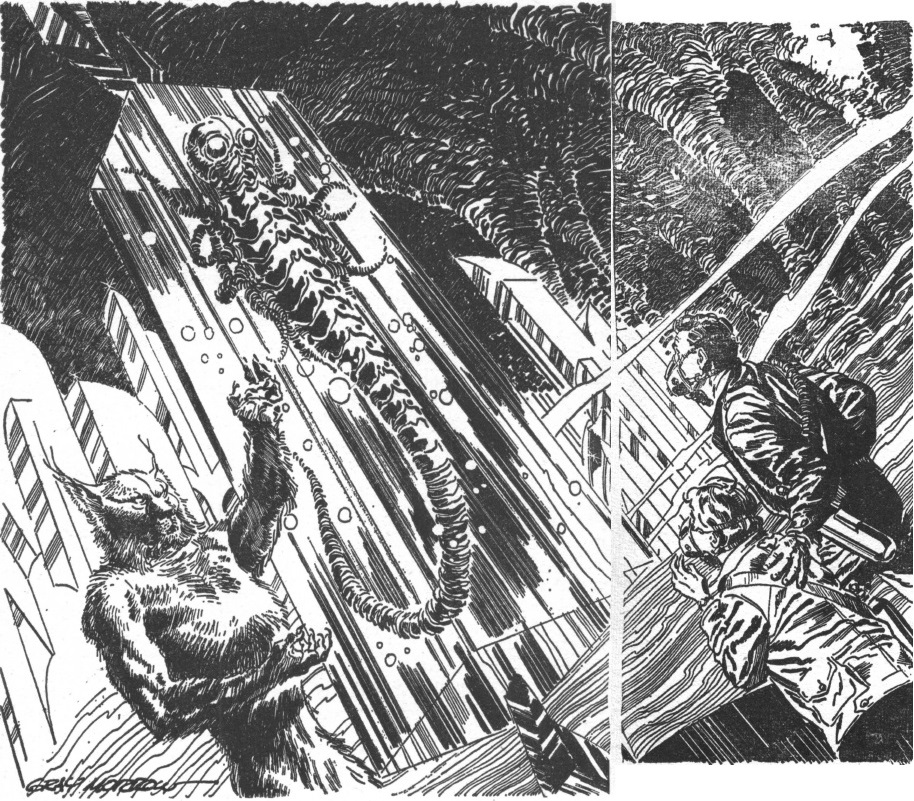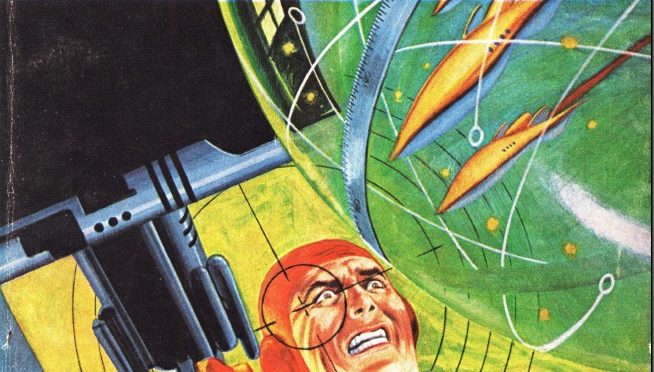
by David Levinson
The popular image of a mirage is a shining oasis in a desert replete with shady palm trees and sometimes dancing girls. That’s not how mirages work. We’re all familiar with heat shimmer, say on a hot, empty asphalt road, casting the image of the sky onto the ground and resembling water. Less common is the Fata Morgana, which makes it look as though cities or islands are floating in the sky. But the popular idea of the mirage remains: something beautiful and desirable, yet insubstantial.
Heat Wave
July was a real scorcher in the United States as a heat wave settled in over much of the Midwest. A heat wave might make a fun metaphor for passion if you’re Irving Berlin or Martha and the Vandellas, but as the latest hit from the Lovin’ Spoonful suggests, it can be a pretty unpleasant experience. As the mercury rises, people get pretty hot under the collar.
On July 12th, the Black neighborhoods on Chicago’s West Side exploded. The sight of children playing in the spray of a fire hydrant is a familiar one, but the city’s fire commissioner ordered the hydrants closed. The spark was lit when, while shutting off the hydrants, the police attempted to arrest a man, either because there was a warrant for his arrest (according to them) or because he reopened a hydrant right in front of them (according to the locals). As things escalated, stores were looted and burned, rocks were thrown at police and firemen and shots were fired. There were also peaceful protests led by Dr. Martin Luther King. Mayor Daley called in the National Guard with orders to shoot. Ultimately, the mayor relented. Police protection was granted to Blacks visiting public pools (all in white neighborhoods), portable pools were brought in and permission was given to open the hydrants.

Children in Chicago playing in water from a reopened hydrant
As things wound down in Chicago, they flared up in Cleveland. On the 18th in the predominantly Black neighborhood of Hough, the owners of the white-owned bar the Seventy-Niner’s Café refused ice water to Black patrons, possibly posting a sign using a word I won’t repeat here. Once again, there was looting and burning and the National Guard was called in. Things calmed after a couple of days, but heated up again when police fired on a car being driven by a Black woman with four children as passengers. It appears to be over now and the Guard has been gradually withdrawn over the last week. City officials are blaming “outside agitators” for the whole thing.
These riots are a stark reminder that the passage of the Civil Rights Act two years ago didn’t magically make everything better, and that problems also exist outside of the South. We have a long way to go before racial equality is more than just wishful thinking.

National Guardsmen outside the Seventy-Niner’s Café
Pretty, but insubstantial
Some of the stories in this month’s IF are gorgeously written, but lacking in plot. Sometimes that’s enough, sometimes it isn’t.

This fellow’s having a very bad day, but he’s not in The Edge of Night. Art by Morrow
The Edge of Night (Part 1 of 2), by A. Bertram Chandler
Commodore John Grimes has resigned both as Superintendent of Rim Runners and from the Rim Worlds Naval Reserve, effective as soon as his replacement arrives. The monotony of the situation breaks when a mysterious ship appears out of nowhere, refusing to answer any hails. Although there’s no hurry, he quickly assembles a crew, including his new wife, late of Terran Federation Naval Intelligence, and his usual psionics officer, whose living dog brain in a jar, which is used as an amplifier, is clearly nearing the end of its life.
The strange ship proves to be highly radioactive. It bears the name Freedom, painted over the older name Distriyir. Everyone aboard is dead, all humans dressed in rags. The only logical conclusion is that the ship is from an alternate universe (the walls between universes are thin at the rim of the galaxy) and the crew escaped slaves. Taking the ship back to its original universe, Grimes and his people learn that intelligent rats have enslaved humans out in the Rim Worlds in this universe. They resolve to correct the situation. To be continued.

The enemy fights like cornered rats. Art by Gaughan
Chandler has written several stories about John Grimes, though his only appearances so far at the Journey have been cameos in other stories set in the Rim. This story seems to be a direct sequel to Into the Alternate Universe, which was half of a 1964 Ace Double.
The story is wonderfully written, pulling the reader along in a way that can only be compared to Heinlein. The characters are strong and distinct, including a woman who is smart, tough, active and above all believable. There’s also a wealth of detail, such as the placement of instruments, clearly stemming from the author’s years serving in the merchant marine of the United Kingdom and Australia, which give verisimilitude to the ships and their crews.
While reading it, this absolutely felt like a four star story to me, but after letting it sit for a while, I’ve cooled slightly. A very, very high three stars.
The Face of the Deep, by Fred Saberhagen
In Masque of the Red Shift, Johann Karlson, the hero of the Battle of Stone Place, led a Berserker, an alien killing machine out to destroy all life, into an orbit around a collapsed star. In the story In the Temple of Mars, we learned of a plan to rescue Karlson. Here, we follow Karlson as he gazes in awe at the collapsed star and its effects on space. The Berserker pursuing him is unable to shoot his ship, but are the people who appear to rescue him the real thing or a ruse?
There isn’t much story here, but the prose is beautiful, pure sense of wonder. Saberhagen is clearly building up to something, probably a confrontation between Karlson and his half-brother, all no doubt to eventually wind up in a fix-up novel. This is only a brief scene in that larger tale, but the sheer poetry of the thing is enough.
Four stars.
The Empty Man, by Gardner Dozois
Jhon Charlton is a weapon created by the Terran Empire. Nearly invulnerable, incredibly strong and fast, he can even summon tremendous energies. Unfortunately for him, for the last three years, he has shared his mind with a sarcastic entity called Moros, which has appointed itself as his conscience. Now, Jhon has been sent to the planet Apollon to help the local rebels overthrow the dictatorial government.

Jhon Charlton deals with an ambush. Art by Burns
Gardner Dozois is this month’s new author, and this is quite a debut. It’s a long piece for a novice, but he seems up to it. There’s room for some cuts, but not much. The mix of science fiction and almost fantasy elements is interesting and works. The only place I’d say a lack of experience and polish shows it at the very end. The point is a bit facile and could have been delivered a touch more smoothly, but it’s a fine start to a new career. Mr. Dozois has entered the Army, though, so it may be a while before we see anything else from him.
A high three stars.
Arena, by Mack Reynolds
Ken Ackerman and his partner Billy are Space Scouts for a galactic confederation. They’ve been captured by the centauroid inhabitants of Xenopeven, who refuse to communicate with them. After several days of captivity, they’re separated, and Ken next sees Billy’s corpse being dragged from the sands of an arena. Vowing revenge, he finds himself the next participant in something like a Spanish bullfight, with Ken as the bull.

Ken after his encounter with the picadores. Art by Virgil Finlay
This is far from Reynolds’ best work. The action is decent, but the parallels with bullfighting are pointed out too explicitly (though maybe it’s necessary for readers who aren’t familiar with the so-called “sport”). However, there is a bit of a twist at the end – one that made me go back and double-check the text – that lifts the story out of complete mediocrity. So-so Reynolds is still pretty readable.
Three stars.
How to Live Like a Slan, by Lin Carter
This month, Our Man in Fandom takes a look at the fannish tendency to give names to inanimate objects. He starts off with the residences of fans sharing apartments and expenses, going back to the Slan Shack in Battle Creek, Michigan right after the War. Alas, the whole thing is largely just a list of in-jokes and things that were funny at the time. And I’ve known plenty of people with no interest in SF who have named their cars. It’s hardly restricted to fans.
Two stars.
The Ghost Galaxies, by Piers Anthony
In an effort to test the steady state theory and perhaps find out what happened to the first expedition, Captain Shetland leads the crew of the Meg II on a voyage to or beyond the theoretical boundary of the steady state universe. The ship’s logarithmic FTL drive increases speed by an order of magnitude every hour. As the ship passes one megaparsec per hour, the crew grows increasingly worried, and their mental state can affect the drive and the ship’s ability to return home.

Somnanda maintains the beacon which keeps the ship in contact with real space. Art by Adkins
This was a difficult story to summarize, or even understand. The writing is very pretty, with a dreamlike quality that mirrors the captain’s mental state and thought processes, but often left me unsure just what was going on. I came away with the feeling that there’s something here, but I have no idea what.
A low three stars.
Enemies of Gree, by C. C. MacApp
Steve Duke is deep behind enemy lines, this time with the B’lant Fazool and Ralph Perry from earlier Gree stories. They’re spying on a Gree excavation not far from the place where Gree first entered the galaxy. Strangely, there are animals here not native to the planet. There may also be an intelligent species nearby, watching both Steve and the Gree slaves.

The ull-ull aren’t native to this planet. Art by Morrow
I’m tired of these Gree stories. Even those that aren’t terrible have a sameness to them. In each of the last few stories, MacApp has made us think that those fighting Gree finally have what they need for victory. It’s time to wrap this series up. This one isn’t helped by the fact that every time Fazool gets mentioned I think of Van and Schenck or Bugs Bunny.
A low three stars.
The Hour Before Earthrise (Part 3 of 3), by James Blish
Dolph Haertel and Nanette Ford have been stranded on Mars, thanks to Dolph’s invention of anti-gravity. They’ve managed to survive, and last time Dolph discovered a radio beacon and set up an interruptor to attract attention. As the installment concluded, they encountered a feline-like predator. This proves to be an intelligent being. They manage to establish contact with Dohmn (the closest they can come to pronouncing its name) and make friends. Eventually, Dohmn leads them to the last surviving member of the original Martian race.

Dohmn introduces Dolph and Nanette to the last Martian. Art by Morrow
And so we reach the end, with everything wrapped up nice and neat. For humans anyway. I’m bothered by the last Martian bequeathing Mars to humanity rather than Dohmn’s people. It’s all a bit too facile, and I find myself returning to my original conception of this as a parody of SF juveniles, from Tom Swift to Heinlein to more recent examples as the story progresses. This certainly wouldn’t be my first pick to give a young reader.
A low three stars for this part and the novel as a whole.
Summing Up
There you have it. An issue that starts off hot and gradually grows tepid. Parts of it sure are pretty, though, even if they’re just hot air.

Dickson, Niven and the rest of the Chandler look promising. A new McIntosh novel less so.



Re: the Saberhagen, agreed, it's a lovely piece and stands well alone. I am really impressed to see stories incorporating cutting edge science like collapsed "hypermass" stars.
I wonder if Niven's Neutron Star will cover similar ground.
Skipping the serials . . .
"The Face of the Deep" was certainly full of the Sense of Wonder, which was the point of the plot. Probably the best in the issue.
"The Empty Man" reminded me of A. E. Van Vogt, with the super-powered protagonist and the complicated plot. He wouldn't have had the downbeat ending, though.
"Arena" wasn't much except fighting. Probably the weakest story in the issue.
"The Ghost Galaxies" didn't make a lot of sense to me. I couldn't buy the thing about fear messing up the beacon.
"Enemies of Gree" wasn't much, and this series has gone on way too long. Is it just me, or was the mystery of the humanoid skeleton just left hanging?